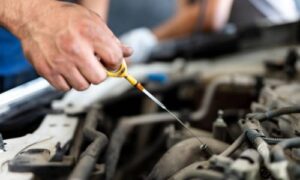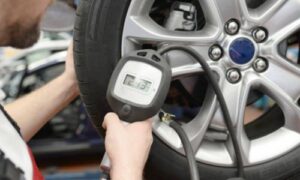Regenerative brakes are a vital component of modern hybrid and electric vehicles. These systems improve efficiency and contribute to sustainability by converting kinetic energy back into stored energy. In this article, we will explore what regenerative brakes are, how they work, their benefits, and their role in the automotive industry.
What Are Regenerative Brakes?
Regenerative brakes are a braking system that recovers energy that would otherwise be lost as heat during braking. Instead of relying solely on friction to slow down a vehicle, regenerative braking systems use an electric motor to generate electricity. This electricity is then stored in the vehicle’s battery for later use. The concept behind regenerative brakes is simple yet ingenious: capture and reuse energy to improve efficiency and reduce wear on traditional braking components.
How Do Regenerative Brakes Work?
The working principle of regenerative brakes is based on converting kinetic energy into electrical energy. Here’s a step-by-step explanation of how this process unfolds:
- Deceleration: When the driver applies the brakes, the vehicle begins to slow down.
- Energy Conversion: The electric motor, which also functions as a generator, converts the vehicle’s kinetic energy into electrical energy.
- Energy Storage: This electrical energy is then directed back into the vehicle’s battery, which is stored for future use.
- Reduced Friction Braking: Because the electric motor provides some of the braking force, the demand for traditional friction brakes is reduced, leading to less wear and tear.
Benefits of Regenerative Brakes
Regenerative brakes offer numerous advantages, making them popular in modern vehicles. Here are some key benefits:
Improved Fuel Efficiency
By capturing and reusing energy that would otherwise be lost, regenerative braking systems can significantly enhance a vehicle’s fuel efficiency. This is particularly beneficial for hybrid and electric cars, where maximizing stored electrical energy is crucial.
Reduced Emissions
Since regenerative braking reduces the reliance on the internal combustion engine, it can help lower a vehicle’s overall emissions. This contributes to a cleaner environment and supports efforts to combat climate change.
Extended Brake Life
Traditional friction brakes suffer from wear and tear due to constant use. Regenerative brakes alleviate some of this stress, resulting in longer-lasting brake components and reduced maintenance costs.
Enhanced Driving Experience
Drivers of vehicles equipped with regenerative braking systems often report a smoother and more controlled braking experience. The seamless integration of regenerative and friction braking ensures optimal stopping power and vehicle stability.
Types of Regenerative Braking Systems
There are different types of regenerative braking systems, each with its unique characteristics and applications. The two main types are:
Series Regenerative Braking
The regenerative braking mechanism operates in series regenerative braking systems with the vehicle’s friction brakes. When the driver applies the brakes, the system determines how much regenerative braking can be used based on factors such as battery state of charge and vehicle speed. The friction brakes then provide the remaining braking force needed to bring the vehicle to a stop.
Parallel Regenerative Brakes
On the other hand, parallel regenerative braking systems can operate independently of the friction brakes. These systems allow for a more flexible distribution of braking force between regenerative and friction braking. In some cases, parallel systems can apply regenerative braking exclusively without engaging the friction brakes.
Applications of Regenerative Brakes
Regenerative brakes are most commonly found in hybrid and electric vehicles, but their applications extend beyond these categories. They are also used in various other types of vehicles and machinery, including:
Electric Bicycles and Scooters
Electric bicycles and scooters often feature regenerative braking systems to enhance battery life and efficiency. By recapturing energy during braking, these systems help extend the range of these electric vehicles.
Trains and Trams
Public transportation systems, such as trains and trams, utilize regenerative braking to conserve energy and reduce operational costs. The captured energy can power onboard systems or be fed into the grid.
Industrial Machinery
Certain types of industrial machinery, such as cranes and elevators, employ regenerative braking to improve efficiency and reduce energy consumption. In these applications, the energy recovered during braking can power other processes or be stored for later use.
Challenges and Limitations of Regenerative Brakes
While regenerative braking systems offer numerous benefits, they also present challenges and limitations that must be addressed.
Energy Recovery Efficiency
Energy recovery efficiency in regenerative braking systems is not always 100%. Factors such as vehicle speed, battery state of charge, and braking intensity can affect how much energy is recaptured. Engineers continually work on improving these systems to maximize energy recovery.
Battery Limitations
The effectiveness of regenerative braking is closely tied to the vehicle’s battery capacity and health. If the battery is fully charged or has degraded over time, the ability to store additional energy becomes limited. Proper battery management and maintenance are essential for optimal regenerative braking performance.
Integration with Traditional Braking Systems
Seamlessly integrating regenerative braking with traditional friction brakes can be challenging. Ensuring a smooth transition between the two systems is crucial for maintaining vehicle stability and driver confidence. Advanced control algorithms and system calibration are necessary to achieve this integration.
Future of Regenerative Braking
The future of regenerative braking looks promising, with ongoing technological advancements and increasing adoption in various sectors. Some key trends and developments to watch for include:
Enhanced Energy Recovery
Continued research and development efforts aim to improve energy recovery efficiency in regenerative braking systems. This includes optimizing motor and generator designs and developing more sophisticated control strategies.
Integration with Autonomous Vehicles
As autonomous vehicles become more prevalent, regenerative braking systems will play a critical role in their operation. Autonomous cars require precise control of braking forces to ensure safety and efficiency, making regenerative braking an ideal solution.
Expansion to Conventional Vehicles
While currently more common in hybrid and electric vehicles, regenerative braking technology may eventually be integrated into conventional internal combustion engine vehicles. This could lead to broader energy savings and emission reductions across the automotive industry.
Global Automotive Regenerative Braking System market size will be USD 22.32 Billion by 2030.
Overview of Guide to Regenerative Brakes
Regenerative brakes represent a significant advancement in automotive technology, offering numerous benefits in efficiency, emissions reduction, and overall driving experience. As the automotive industry evolves, regenerative braking systems will undoubtedly play an increasingly important role. Understanding how these systems work and their potential applications can help consumers make informed decisions when choosing their next vehicle. Whether you are a driver looking to reduce your environmental impact or a technician interested in the latest automotive technologies, regenerative brakes are a topic worth exploring.
Regenerative braking is a clever technology that helps electric and hybrid cars run more efficiently and extends the life of your brakes! If you’re looking for a different way to extend the life of something important on your vehicle, like your windshield, visit Phoenix Windshield Repairs. Our technicians can quickly and affordably repair chips and cracks in your windshield, preventing them from growing and potentially requiring a full replacement. Keep your car safe and on the road with Phoenix Windshield Repairs!
FAQs about Regenerative Brakes
How many electric cars have regenerative braking?
Nearly all-electric vehicles (EVs) and hybrids use regenerative braking. It’s a core feature that improves efficiency and range. So, most electric cars on the road today (over 95%) have regenerative braking.
Does Tesla use regenerative braking?
Yes, Tesla is a pioneer in regenerative braking technology. Their cars utilize it extensively, contributing to their impressive range and efficiency.
Does regenerative braking reduce battery life?
No, regenerative braking actually helps extend battery life. Instead of wasting energy as heat during conventional braking, it captures kinetic energy and converts it back into electricity, recharging the battery to some extent.
Problems with regenerative braking?
Regenerative braking itself isn’t inherently problematic. However, some drivers might find the initial braking sensation unfamiliar compared to traditional brakes. Also, a very strong regenerative braking setting might feel too abrupt for some.
Why is regenerative braking limited?
There are physical limitations to how much energy can be captured during braking. Additionally, car designers balance regenerative braking strength with driver preference for a smooth and natural braking feel. Many EVs offer adjustable regenerative braking settings to cater to individual driving styles.






